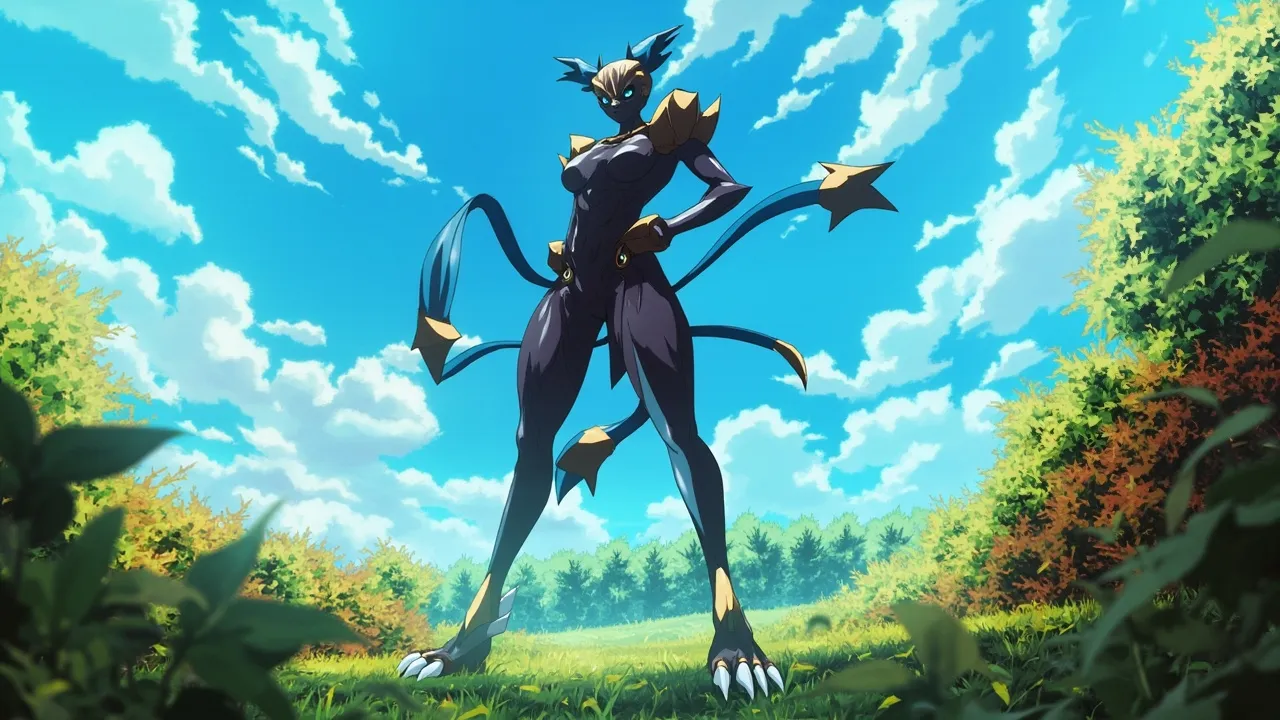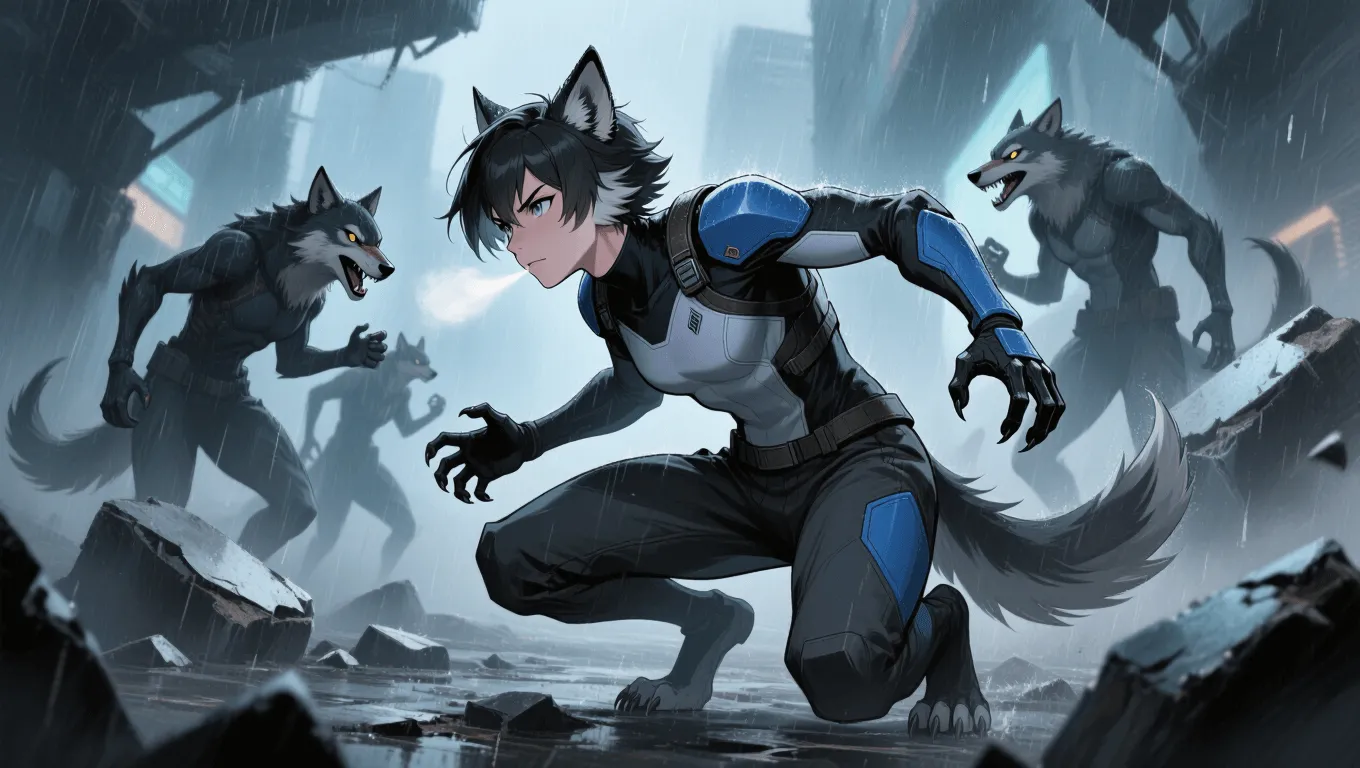Animalistic Instincts

Animalistic Instincts Video Demo 🎬
Table of Contents
- Animalistic Instincts Video Demo 🎬
- What Is Animalistic Instincts
- Core abilities of Animalistic Instincts
- Application / Tactical Advantages in Combat
- Level: Level 1 🏙️, Level 2 🌇, Level 3 🌃
- Limitations of using the Animalistic Instincts
- Weakness against what other superpowers
- Synergistic Power Combos
- Known Users
Animalistic Instincts describes a superpower that tunes a character’s mind and body to the raw, efficient heuristics of the natural world. Within the first heartbeat of any encounter, the user reads intent, prioritizes threats, and moves with feral economy. As a survival-focused enhancement, Animalistic Instincts blends heightened senses, danger sense, and reflexive decision-making to create a predatory edge in exploration, tracking, and combat. For readers exploring more abilities, the full catalog is available in the Superpower Wiki, and those seeking inspiration can try the random superpower generator.
What Is Animalistic Instincts
Animalistic Instincts is the preconscious, rapid pattern-recognition and reflex system seen in apex predators, but scaled for superhuman use. Rather than granting raw strength outright, it optimizes the user’s existing body and attention to sense micro-cues—breathing cadence, foot pressure, scent gradients, eye saccades, and muscle priming—and then acts before conscious thought catches up. It is not mindless savagery; the power is a disciplined “primal awareness” and “predator’s intuition” that shortens the loop from perception to action.
The result is fluid movement, anticipatory dodging, ambush awareness, and exceptional tracking. Many users describe slipping into a “quiet mind” or “hunt focus” where noise falls away and only relevant signals remain. In narrative terms, Animalistic Instincts is distinct from general enhanced senses or super speed; it’s the orchestration layer that converts inputs into decisive, efficient outputs.
Core abilities of Animalistic Instincts
Heightened sensory acuity
While not always equal to full-on super-senses, the user’s hearing, smell, and vision sharpen around useful frequencies and patterns. They catch stress pheromones, distant footfalls, heartbeat tempo shifts, powder-burn traces, and minute wind changes that betray movement or concealed threats.
Danger sense and preconscious threat triage
The user “feels” danger milliseconds before it manifests. This is not clairvoyance; it’s lightning-fast heuristic matching—weapon angle, shoulder load, gaze focus, and terrain position signal intent. The body automatically orients to cover, rolls weight to the ball of the foot, or initiates a slip or parry.
Reflex optimization and locomotor efficiency
Animalistic biomechanics translate to explosive starts, seamless lateral cuts, and low-energy stance shifts. The user wastes no motion; every step sets up the next. This includes improved balance, silent footwork, and springlike tendon use for sudden bursts.
Tracking and pursuit/evade dynamics
Through scent layering, disturbed foliage, micro-abrasions on hard surfaces, heat trails, and cadence memory, the user reconstructs paths and predicts escape vectors. In urban environments, this extends to reading crowd flow, reflective surfaces, and HVAC drafts.
Social and emotional read
Predators assess intent in packs and prey; the user decodes microexpressions and vocal tension, often defusing ambushes or sussing out lies. This “prey-predator empathy” can guide intimidation, negotiation, or stealth infiltration.
Terrain exploitation
Like a big cat choosing angles of approach, the user naturally picks positions that maximize concealment and leverage: windward approaches, shadow-lines, choke points, and height advantages.
Pain gating and adrenal timing
The fight-or-flight system is regulated rather than overwhelmed. The user can gate pain, spike focus without tunnel vision, and time adrenaline surges to sprint, grapple, or break contact without gassing out too early.
Application / Tactical Advantages in Combat
In close quarters, Animalistic Instincts turns split seconds into victories. The user reads shoulders before punches launch, slips inside striking arcs, and counters with biomechanically efficient blows. Grappling benefits from instinctive weight distribution, trip angles, and leverage exploitation. Against multiple opponents, pack-tactics logic kicks in—staggering attackers, using one as moving cover, and funneling threats into narrow lanes.
At range, the power enhances cover selection and shot timing: moving during enemy breath transitions, peeking on reload cycles, or using ambient noise to mask footfalls. In stealth, the user chooses approach vectors based on light spill, surface resonance, and scent carry. In pursuits, they anticipate corners, stairwell choices, and rooftop transitions, conserving energy for decisive bursts.
Importantly, Animalistic Instincts supports mission versatility: infiltration, reconnaissance, search and rescue, bounty tracking, and wilderness survival. It pairs especially well with characters who favor ambush tactics, silent takedowns, and non-lethal control.
Level: Level 1 🏙️, Level 2 🌇, Level 3 🌃
Level 1 — Tuned Awareness
Beginners experience sharpened situational awareness and “gut checks” that prove right more often than chance. They notice stalking eyes in crowds, feel when a room “goes cold,” and avoid telegraphed attacks. Tracking at this stage relies on obvious disturbances—fresh footprints, broken twigs, heavy breathing. In combat, they gain modest improvements to reaction time, footwork, and timing, enough to outperform trained but ordinary foes.

Level 2 — Feral Economy
At intermediate mastery, the user’s mind-body loop is nearly seamless. They sense threat angles before weapons leave holsters, ghost-step across creaky floors, and read scent patches and thermal residues to predict movement. Their feints and counters are brutally efficient, and they can maintain hunt focus for extended engagements without fatigue. In urban or wild terrain, they map air currents, echo patterns, and crowd rhythms to enter and exit undetected.

Level 3 — Apex Predator
At peak performance, the user becomes a battlefield metronome. Reflex arcs compress to near-meta-human speeds, enabling preemptive slips and counterstrikes that look like foresight. Tracking borders on uncanny: layered scent sorting in rain, heartbeat discrimination in noise, and precise prediction of opponent decisions from micro-tells. The apex user controls adrenal surges, pain gating, and breath cycles with surgical precision, executing complex ambushes, pack tactics with allies, or solo infiltrations deep behind enemy lines.

Limitations of using the Animalistic Instincts
-
Sensory overload and environmental mismatch
Environments saturated with synthetic scents, strobe lighting, sonic interference, or EM noise can flood the instinctive system, causing errors or fatigue. -
Heuristic bias
Instincts are only as good as the patterns they’ve learned. Novel tech, exotic powers, or deliberately deceptive movement (e.g., puppeteered decoys) can outpace recognition. -
Tunnel focus
The “hunt focus” that grants efficiency can narrow attention. Users may miss strategic shifts, long-range threats, or social nuance during extended pursuit. -
Counter-conditioning and baiting
Opponents can exploit predictable responses—presenting a weak flank to lure a pounce into a trap, masking scent with absorbers, or using false tells to trigger premature action. -
Physiological cost
Even with adrenal control, bursts, sprints, and micro-adjustments tax joints, tendons, and CNS recovery. Overuse leads to fatigue, tremors, and impaired decision-making. -
Ethical and social friction
The predatory affect—cold eyes, minimal speech, invasive proximity—can unsettle allies or civilians, complicating diplomacy and public trust.
Weakness against what other superpowers
-
Illusion and sensory manipulation: Visual/aural hallucinations, glamours, and scent spoofing corrupt the input stream, making instincts unreliable.
-
Emotion or pheromone control: Fear, rage, or attraction amplifiers hijack the fight-or-flight axis and disrupt judgment.
-
Invisibility and phase-shifting: Removal from normal sensory channels bypasses heuristic detection.
-
Probability manipulation and chaos fields: When outcomes decouple from patterns, predictive instincts fail.
-
Time dilation and speedsters: If the opponent operates outside normal time windows, even apex reflexes can’t keep pace.
-
Telepathy and mind fog: Scrambling attention or suppressing focus disrupts preconscious processing.
-
Sensory jamming/dampening: White-noise generators, scent scrubbers, and anechoic fields blunt the advantage.
-
High-altitude or vacuum environments: Reduced scent carry, altered acoustics, and low debris signals degrade tracking.
Synergistic Power Combos
-
Enhanced Agility or Parkour Mastery: Converts instinctive pathing into breathtaking movement across rooftops, forests, and tight interiors.
-
Night Vision or Low-Light Adaptation: Extends stealth and ambush capability into darkness, where predators thrive.
-
Regenerative Healing: Enables high-risk, high-reward engagements, letting the user press an advantage despite minor injuries.
-
Stealth/Camouflage: Naturalizes silent approaches and disappearance after strikes, maximizing ambush cycles.
-
Animal Communication or Zoopathy: Adds reconnaissance through local fauna—early warnings, scent leads, aerial overwatch.
-
Enhanced Strength or Kinetic Augmentation: Ensures that perfectly timed counters carry decisive stopping power.
-
Echolocation or Spatial Sense: Provides 3D mapping in smoke, fog, or total darkness, boosting flanks and escapes.
-
Weapon Intuition or Adaptive Combat: Bridges the gap between instinct and tool use, turning improvised weapons into extensions of the body.
-
Sound Dampening: Lets the user move at speed without acoustic signatures, preserving stealth even on noisy surfaces.
-
Climbing/Wall-Crawling: Expands approach vectors into vertical planes, multiplying ambush options.
Known Users
-
Wolverine: Noted for feral intuition, tracking prowess, and battle-tested danger sense that verges on precognitive in close quarters.
-
Black Panther: Heightened senses and honed predator tactics amplified by training and technology.
-
Sabretooth: Brutal application of instinctive hunting and relentless pursuit.
-
Kraven the Hunter: Human exemplar of perfected hunting heuristics and environmental reading.
-
Vixen: Channels animal attributes via the Tantu Totem, often showcasing tracking and predatory awareness.
For readers who want to compare this ability with others or build unique character kits, browse the complete superpower wiki or roll a fresh concept using the random superpower generator.
